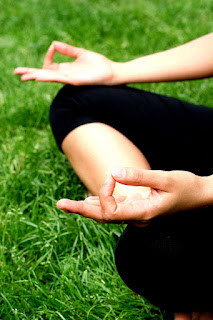The Mudras - "To Bring Forth Delight"

The word Mudra means seal, gesture, or attitude. The interpretation of the word cam be seen as “to bring forth delight”. The mudras in yoga have various psychic, emotional, devotional and aesthetic qualities. The use of mudras allows the yogi to connect his individual pranic energy with the universal energy, or Prana. When we think of prana as being the electricity of the body, we can also think of the mudras as creating a “short-circuit” in the flow of that energy within the body. Mudras are used to a great extent in Classical Indian dance, where the whole body, including the face, is used to symbolise a meaning. They are also used in Japanese Tea Ceremonies in various forms.
.
The mudras consist of physical movements of the body that affect the mind. There are different types of mudras. Some use simply the hands, and these are called Hasta mudras. Others can involve the use of the whole body, where asana, pranayama, bandha and visualisation techniques are combined. Using mudras can alter our attitudes, moods, and even our perception. They prepare the mind for meditation as they invoke an introverted mood, therefore inducing pratyahara, the Fifth Limb of Patanjali's Yoga Sutras. They can also help deepen our awareness and concentration. The mudras are said to help awaken the chakras and the kundalini, so although some can seem like very subtle or small movements, they can be powerful. Use of the mudras allows us to change or break repetitive behaviour patterns that would otherwise be difficult to do through willpower, and to establish new ones. This is because they allow us to access the area of the brain responsible for our unconscious reflexes and instinctive habits in a subtle way.
.
There are five groups of Mudras:
.
1. Hasta mudras, or hand mudras such as Chin mudra (or gesture of consciousness).
.
2. Mana mudras, or head mudras. These are used in Kundalini yoga and are good for inducing a state of pratyahara. Examples are Shambhavi mudra, (eyebrow centre gazing) and Nasikagra drishti (nose tip gazing).
.
3. Kaya mudras, or postural mudras. These are asanas combined with breathing and concentration. Examples are Vipareeta Karani mudra, which is similar to half shoulderstand but where the trunk is at a 45° angle to the floor.
.
4. Bandha mudras, or energy lock mudras, which are bandhas combined with asanas. E.g. Maha mudra.
.
5. Adhara mudras, or base mudras which raise the energy upwards.


